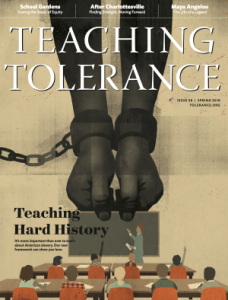Even though the pandemic has forced many Americans to take shelter in their homes, that has not hampered the fight for civil rights from being waged in America. History repeats itself as people come together and march under one banner, one belief, one goal against a government they feel has failed them. Everyday hundreds of thousands of Black Lives Matters supporters take to the streets to protest the racism that has taken root in the American justice system and society for years. Much like the civil rights movement of the 1950s, these protests show that “people are tired” and “no longer willing to accept the things that are really horrible about our country.”1 However, much like how the civil rights movement had to face a mountain of opposition, so too are the protests going on today. We are once again faced with the harsh reality that change does not come without great sacrifice.
Then vs now. The fight for equality continues to this very day, from: Photos show how the Black Lives Matter protests compare to civil rights demonstrations in the 1960s
The Equal Justice Initiative website contains a plethora of knowledge and resources covering the racial injustices of America’s past and present. Its new articles cover a wide range of subjects, from how blacks are treated in the prison system to how COVID19 has highlighted the unequal distribution of healthcare to minorities. Out of all the articles the website has to offer, nothing is more eye-opening than its article on “Segregation In America.” This article goes into depth on America’s toleration towards racism, and how these racist acts from the past are still happening to this day. While we might like to think that we have come a long way since ending segregation, it’s important that we admit to ourselves that we are far from completely abolishing it. For example, despite all the progress made from the efforts of civil rights activists, a 2017 study found that “discrimination against black job applicants hasn’t changed since the 1990s.”2 How can it be that despite the civil rights act of 1964 being passed, that blacks are still faced with the same level of discrimination in the workplace? This is due to the systemic racism that is deeply entrenched in our legal system. Systemic racism refers to the systems in place that allow for the creation and maintaining of racial inequality. Racial inequality in America can be seen in the income distribution gap between blacks and whites, the mortality rates of black and white infants, and especially the disparity between black and white incarceration. The only way for racism to truly be gone from America is for us to never relent. Like protestors of the Civil Rights movement continued to march through a volley of blind hate and ignorance, so too march the Black Lives Matter protestors. We must do our job as educators to educate students on the matter of race, so that the future generation will be more comfortable to tackle the evil that is racism head on.
Although many years have passed since slavery, we have yet to shake free from its shackles. Image from teachingtolerance.org
Talking about race is no easy matter, as it is not something we engaged in much growing up. Thankfully, there’s plenty of helpful resources on the internet to teach the subject appropriately. Teaching tolerance is a website which contains frameworks and resources that assist both teachers and students to learn about social justice and anti-bias and to help students become the pioneers of change needed for progress. Its framework for teaching about American slavery helps students in understanding how the practice of slavery from so many years ago can still be felt in many aspects of our daily lives. We may not like to think about it, let alone talk about it, but by not having discussions about the systemic racism that plagues our country, we ultimately allow white supremacy to fester and grow. Students must come to the realization that racism affects them, be it noticeable or hidden under the rug. Using the many articles that cover the Black Lives Matter protests, especially those on police brutality, is also a great resource as well. Showing students that the obstacles protestors are faced with now are the same as the ones Civil Rights protestors fought against shows how history is never ending. As put best by James Baldwin “history is not the past it is the present.” History, no matter how long ago it was, affects us in many ways. If change is to happen, then we must readily open the doors to discussions about our past so we can change the present and future.
1. ODU professor explains similarities between today’s protests and the Civil Rights Movement
2. How Segregation Survived | Equal Justice Initiative



Wow that was really inspiring. It really is crazy how history repeats itself. I completely agree with you that we need to open the doors to discussions about our past if we are to going to have change. We as teachers need to take these deep conversations into the classroom to try and get out students to try and inspire change in this world. I love your post and think its important.
The Black Lives Matter protests taking place today are undoubtedly inspiring, but in some ways it feels disheartening too. The fact that history is repeating itself is a testament to how difficult it is to make lasting change on major issues like racial equality. But I think it is our duty as teachers to make these connections with our students. We can’t teach a “straight up” history of the U.S. anymore (not that I would want to). We have to connect the past to the present and use these great resources to do so. Thank you for sharing!